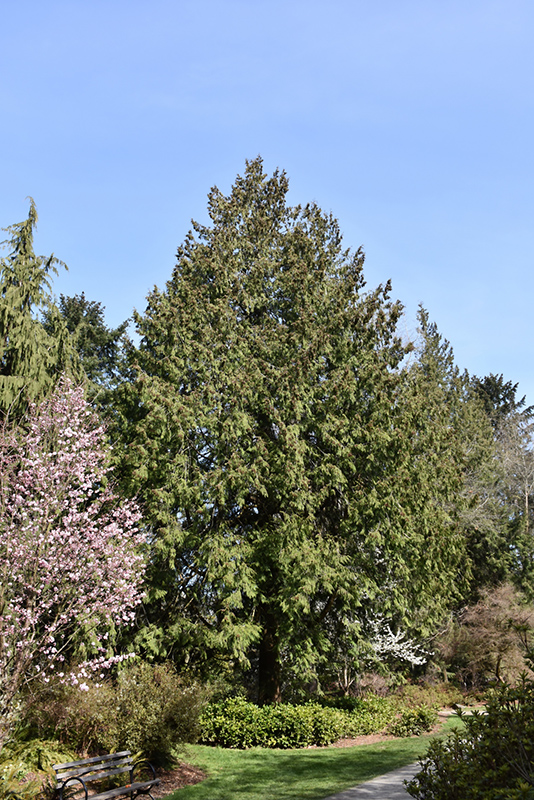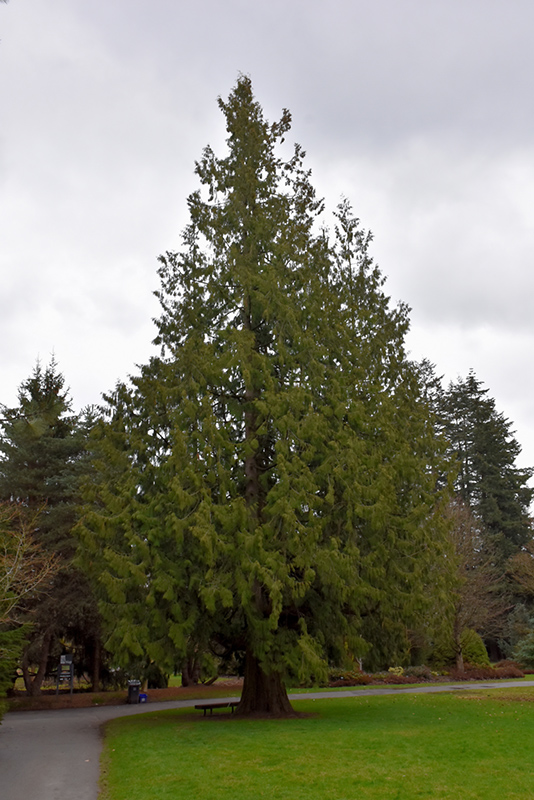Height: 50 feet
Spread: 20 feet
Sunlight:
![]()
![]()
Hardiness Zone: 5a
Other Names: Giant Arborvitae, Western Red Cedar
Description:
A native conifer of the West Coast, where it can grow hundreds of feet tall; under cultivation, a large, narrowly upright tree, interesting shaggy reddish bark; numerous cultivars available, performs best in moist, humid environments but very adaptable
Ornamental Features
Western Arborvitae is primarily valued in the landscape for its distinctively pyramidal habit of growth. It has dark green evergreen foliage. The scale-like sprays of foliage remain dark green throughout the winter. The shaggy antique red bark adds an interesting dimension to the landscape.
Landscape Attributes
Western Arborvitae is an evergreen tree with a strong central leader and a distinctive and refined pyramidal form. Its relatively fine texture sets it apart from other landscape plants with less refined foliage.
This is a relatively low maintenance tree. When pruning is necessary, it is recommended to only trim back the new growth of the current season, other than to remove any dieback. It has no significant negative characteristics.
Western Arborvitae is recommended for the following landscape applications;
- Shade
- Vertical Accent
Planting & Growing
Western Arborvitae will grow to be about 50 feet tall at maturity, with a spread of 20 feet. It has a low canopy with a typical clearance of 3 feet from the ground, and should not be planted underneath power lines. It grows at a slow rate, and under ideal conditions can be expected to live for 80 years or more.
This tree does best in full sun to partial shade. It is quite adaptable, prefering to grow in average to wet conditions, and will even tolerate some standing water. It is not particular as to soil type or pH. It is somewhat tolerant of urban pollution, and will benefit from being planted in a relatively sheltered location. Consider applying a thick mulch around the root zone in winter to protect it in exposed locations or colder microclimates. This species is native to parts of North America.








